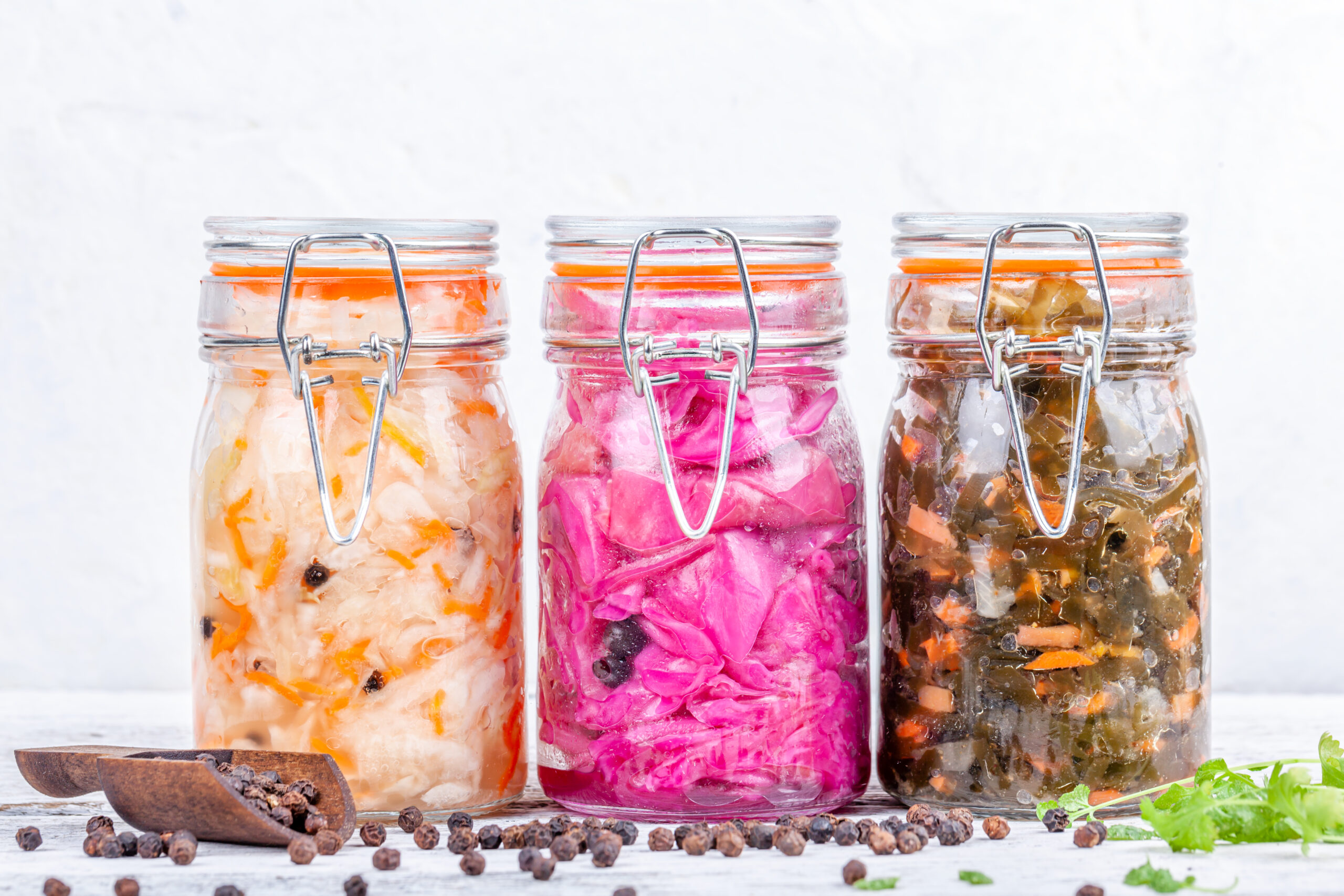History of lactoferments
Long before probiotics became the favourites of the microbial world, cultures throughout history and around the globe have celebrated fermented foods. The Neolithic tradition of fermentation, which originated as a preservation method and has been used for thousands of years, has sparked the modern use of and interest in probiotic microbes.
Most research is focussed on fermented milk products. But vegetables such as cabbage, carrots, garlic, soya beans, olives, cucumbers, onions, turnips, radishes, cauliflower and peppers as well as fruits such as lemons or berries also offer new flavours and textures, which is one reason why fermentation at home, especially lactic acid fermentation, is becoming increasingly popular. Whether you’re a lover of culinary traditions, interested in potential health benefits or simply enjoy trying new foods, fermentation enthusiasts are breathing new life into this ancient practice. Lactic acid fermentation or lacto-fermentation is one of the most common methods and one of the easiest to experiment with at home. This is an anaerobic process in which lactic acid bacteria, mainly Lactobacillus species, convert sugar into lactic acid, which acts as a preservative. Salt plays a central role in traditional fermentation, as it creates conditions that favour the bacteria, prevents the growth of pathogenic microorganisms, removes water and nutrients from the substrate and enhances the flavour.
World cultures
The earliest records of fermentation date back to 6000 BC from the Fertile Crescent – and almost every civilisation since then has included at least one fermented food in its culinary heritage. From Korean kimchi and Indian chutneys to the ubiquitous sauerkraut, yoghurt and cheese, cultures around the world have developed unique flavours and traditions around fermentation.
In some cases, fermentation is an important part of food safety that goes beyond preservation. Garri is an important source of food in West African countries. It is made from the root vegetable cassava, which contains natural cyanides and can be poisonous if not fermented properly. Other foods, such as the Tanzanian fermented mucilage Togwa, protect against food-borne diseases in regions with poor hygienic conditions.
In particular, Asian civilisations have a long tradition of fermenting various foods – Japanese natto (soybeans), Vietnamese mám (seafood), Chinese douchi (black beans), Laotian pa daek (fish sauce), Korean banchan (side dishes) – which are still an essential part of their everyday cuisine today. The connection between fermented foods and health can be traced back to ancient Rome and China and is still of great interest to researchers today.






